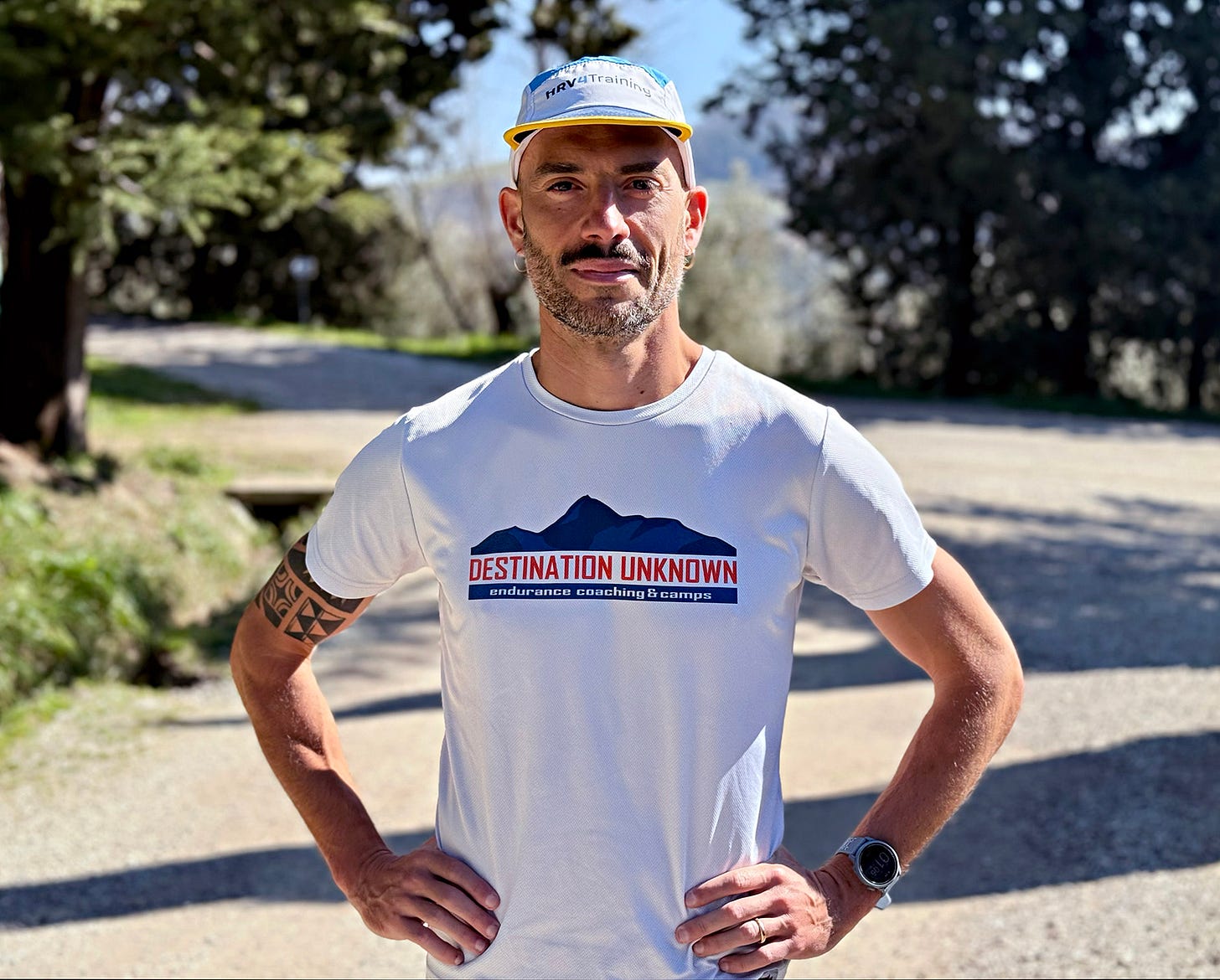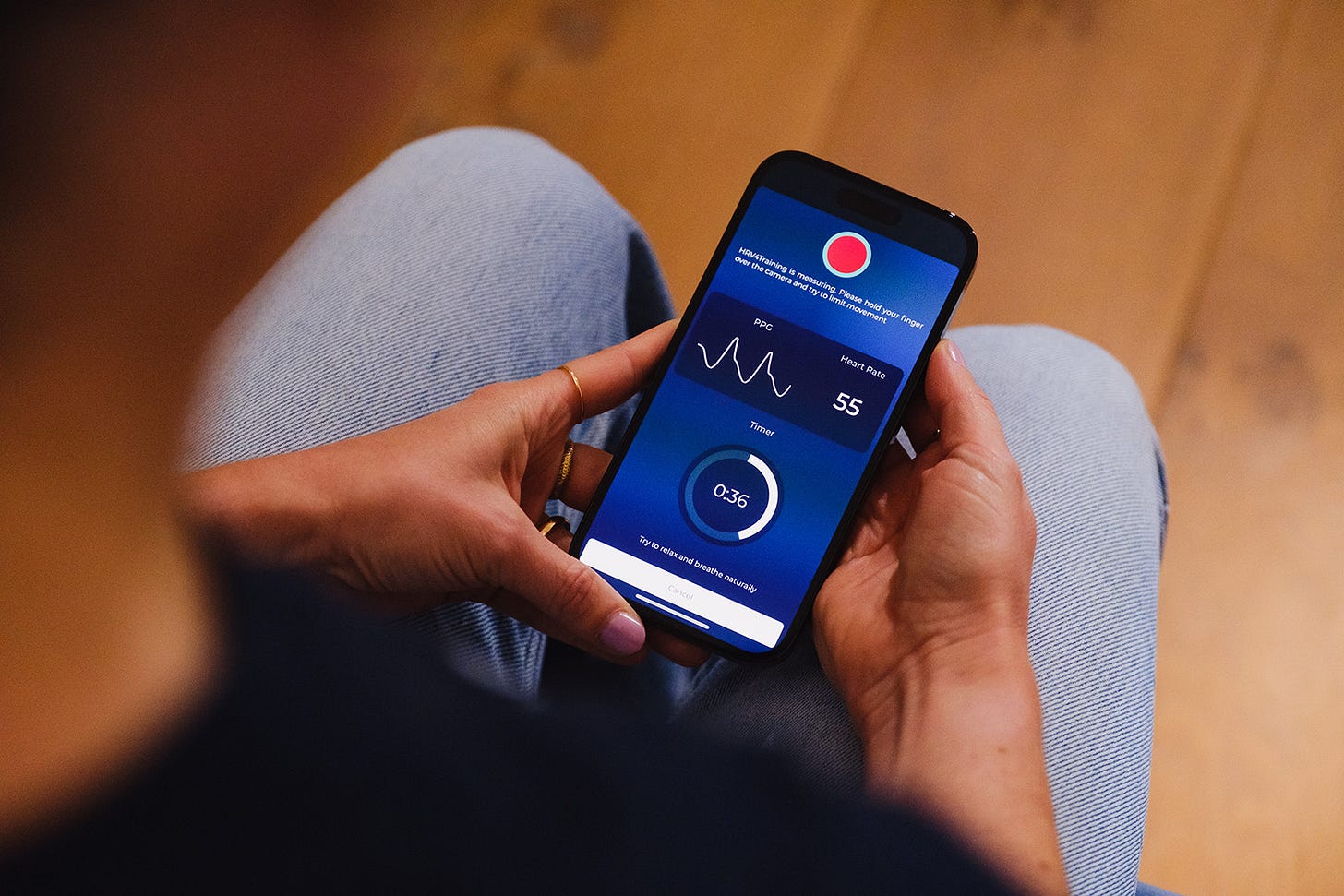Recent articles and updates [March 2025]
Heart rate variability (HRV), wearables, entrepreneurship, endurance coaching, training talk and some ramblings.
hi there 👋
I hope all is well.
In today’s monthly recap, you will find articles covering best practices for Heart Rate Variability (HRV) measurements (and how to exploit the orthostatic stressor), the relationship between HRV, the menstrual cycle, pregnancy, and menopause, some recent papers I have been contributing to, and improvements in the Intervals Analysis in HRV4Training Pro.
As you might have seen already, I’ve also put together a (rather long!) blog covering all things periodized nutrition and metabolic efficiency and launched my 1 to 1 coaching for runners. Exciting times.
I hope you’ll find the articles useful and I would like to take the opportunity to thank you for your support.
Please feel free to comment below or in the articles should you have any questions, and I will follow up soon.
Take care!

Heart rate variability (HRV) 🫀
Monitoring HRV: Why the Orthostatic Stressor is Best and How to Make it Practical. Research shows there’s only one reliable way to use heart rate variability (HRV) to track subtle training stressors—including overtraining.
No wearables are needed, just a morning orthostatic stressor as we recommend taking with HRV4Training. This is a typical case of when marketing and science keep diverging, unfortunately. Learn all about it, here.
Heart Rate Variability (HRV), the Menstrual Cycle, Pregnancy, and Menopause. Our understanding of the relationship between heart rate variability (HRV)and the menstrual cycle, pregnancy, and menopause has evolved significantly in the last decade. In my latest blog, I provide an overview of our current understanding and some practical insights based on what the data has shown in terms of between and within-individual variability. You can find it here.

Research 📝
Wearable technology. I have been collaborating with Dr. Cailbhe Doherty at the Insight SFI Research Centre for Data Analytics at University College Dublin on two articles related to wearable technology, covering composite scores and privacy concerns. I hope we’ll be able to share more with you in the future, but in the meantime, here is a reminder of what’s measured, vs what’s estimated (or even entirely made up), when using wearables. It might be worth a read if you use these devices.
Trusting the Right Tool for the Job. In case you missed this one, it was also prompted by Cailbhe’s group and their work showing issues in tracking HRV for the Apple Watch. Check it out.
Training Talk 🏃🏻♂️🚴
Periodized Nutrition for Endurance Performance: Data and Insights from a Case Study. There’s a lot to say about these past few months, during which I shifted from a predominantly high-carb diet to a heavily periodized diet and a “fueling for the work required” approach. In my write-up, I cover: Principles and approach: fuel for the work required and training low strategies; Metabolic changes, fat oxidation, and running economy; Stress response: HRV, caloric deficit and macronutrient changes; Behavior and subjective data (sleep, motivation, etc.); Performance data; Body composition changes; Practical examples: diet, low-carb days, high-carb days. Enjoy the read, here.

CoachCorner ⏱️
Endurance Coaching Services. During the past 15 years, I was fortunate enough to meet many scientists, coaches, and athletes with whom I could discuss all things training-related - and who could challenge my thoughts and biases. It's been a long journey - one that began with developing new technologies for HRV tracking, led me back to university to study Sports Science nearly a decade after my first degree, and gradually evolved into a deeper focus on understanding health and performance at an individual level. Coaching is another step of that journey. It checks a lot of boxes for me: problem-solving, long-term thinking, continuous learning, connecting with people and community, the love of sport, and helping others achieve their goals. If you’d like to work with me, please learn more here, and fill in the athlete intake form, here.

Building 🛠️
I’ve extended the Intervals Analysis in HRV4Training Pro to show you a plot of your Pace and Heart Rate for the hard segment of your interval sessions. Progress (or lack thereof) in hard interval sessions is one of the simplest and yet most effective ways to track how endurance training is going. Somewhat surprisingly, this is missing from most platforms out there. Personally, this is one of the tools I use both for me and for the athletes I coach, together with the aerobic efficiency analysis I discussed last month. Check out an example of the new Intervals Analysis plot below and in this blog. If you are an HRV4Training user, you can try HRV4Training Pro here.

Podcasts 🎙️
HRV: What should I do with it? Featuring ‘Special Guest’ Marco Altini. Last week I was invited by Gerrit and Jurgen to answer listeners’ questions about HRV on the Slimmer Presteren Podcast. This was a fun chat as it was a bit different from the typical overview of HRV, and we tried to keep it practical, answering people’s questions and (hopefully!) clearing a few common doubts. The show is typically in Dutch but as my Dutch is very very very far from being good enough, my episode is in English. I hope you will find it useful.
Ramblings and Rants 🤌
Well, this month was all about metabolic efficiency, hence some related rambling and rants.
No, fat oxidation doesn’t take care of itself because we are endurance athletes. Some data, here.
Metabolic flexibility is when nutrition aids training (and performance), instead of compromising it. Also: stop worrying, carbohydrate oxidation is totally fine, as shown here.
Testing the limits of my (new) metabolism with 2 hours near marathon intensity, fueling with ~11 grams of carbs per hour. See some of the reasoning here (and here!).
6 hours of focused running. 70 kilometers, 1400 meters of elevation gain. 148 grams of carbs (in total, not per hour 😅). 24 grams per hour, more or less. A lifelong experiment. The beauty of the process. Road to Passatore continues.
I’ve added a practical example of the implications of the improvement in fat oxidation following a periodized nutrition approach for a long race like the 100 km del Passatore. If we do the math, we can see it makes an enormous difference, as I show here.
I’m really enjoying Bob Seebohar’s endurance sports nutrition course, especially the section about metabolic efficiency. In Bob’s words, 25% of metabolic efficiency is training (volume and intensity distribution), while the remaining 75% is nutrition. It matches my data very well.
When it comes to HRV, a positive response to a big day shows that we are on the right path but does not determine what we can do next. Something recovery and readiness scores fail to capture. More considerations, here.
In the past two weeks, I gave two lectures in which I discussed user-generated data and building models such as the one we have in HRV4Training to estimate running performance. One was for Human Movement Sciences students at Vrije Universiteit Amsterdam (led by Sina David) and another one was for Stephen Seiler’s Technology in Sports course. If you are interested in learning more, you can find the paper here.
Last weekend I was fortunate to see two of the greatest athletes of all time battling on the trails and hills near home. A day to remember. Feeling grateful and motivated for what’s to come.

That’s a wrap for this month. Thank you for reading!
How to Show Your Support
No paywalls here. All my content is and will remain free.
As a HRV4Training user, the best way to help is to sign up for HRV4Training Pro.
Thank you for supporting my work.
Coaching
If you are interested in working with me, please learn more here, and fill in the athlete intake form, here.
Recent Updates:
Marco holds a PhD cum laude in applied machine learning, a M.Sc. cum laude in computer science engineering, and a M.Sc. cum laude in human movement sciences and high-performance coaching. He is a certified ultrarunning coach.
Marco has published more than 50 papers and patents at the intersection between physiology, health, technology, and human performance.
He is co-founder of HRV4Training, advisor at Oura, guest lecturer at VU Amsterdam, and editor for IEEE Pervasive Computing Magazine. He loves running.
Social:





